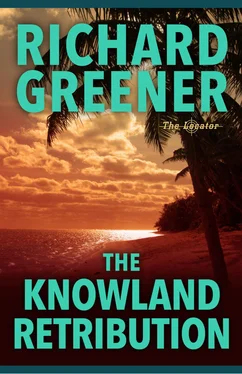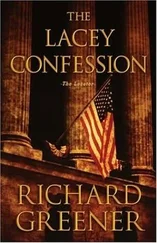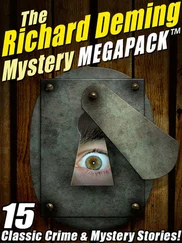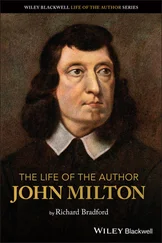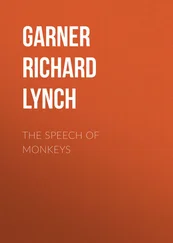Richard Greener - The Knowland Retribution
Здесь есть возможность читать онлайн «Richard Greener - The Knowland Retribution» весь текст электронной книги совершенно бесплатно (целиком полную версию без сокращений). В некоторых случаях можно слушать аудио, скачать через торрент в формате fb2 и присутствует краткое содержание. Жанр: Триллер, на английском языке. Описание произведения, (предисловие) а так же отзывы посетителей доступны на портале библиотеки ЛибКат.
- Название:The Knowland Retribution
- Автор:
- Жанр:
- Год:неизвестен
- ISBN:нет данных
- Рейтинг книги:5 / 5. Голосов: 1
-
Избранное:Добавить в избранное
- Отзывы:
-
Ваша оценка:
- 100
- 1
- 2
- 3
- 4
- 5
The Knowland Retribution: краткое содержание, описание и аннотация
Предлагаем к чтению аннотацию, описание, краткое содержание или предисловие (зависит от того, что написал сам автор книги «The Knowland Retribution»). Если вы не нашли необходимую информацию о книге — напишите в комментариях, мы постараемся отыскать её.
The Knowland Retribution — читать онлайн бесплатно полную книгу (весь текст) целиком
Ниже представлен текст книги, разбитый по страницам. Система сохранения места последней прочитанной страницы, позволяет с удобством читать онлайн бесплатно книгу «The Knowland Retribution», без необходимости каждый раз заново искать на чём Вы остановились. Поставьте закладку, и сможете в любой момент перейти на страницу, на которой закончили чтение.
Интервал:
Закладка:
In the picture, Leonard looked distant and dazed. He was not smiling the way he always did in closing shots before. His face held only a vacant gaze. Nothing meant anything to him after, and it showed. His long hair was straggly, messy, uncombed. He was very fat. Even now he took a small shock on seeing how fat he had been. The caption read: “Leonard Martin in a Photograph Taken Three Years Ago.”
The story told how Isobel had been blindfolded throughout the interview. She was unable to describe his appearance or confirm his identity as Leonard Martin-visually. Despite that limitation, she wrote that there existed no question the man she met was Leonard Martin. She was betting her reputation and future on it; so too, if to a lesser extent, was the New York Times. No need now to shave his beard, grow his hair, or keep the bottle of Grecian Formula bought on a fearful impulse somewhere in New Jersey. Meeting Isobel Gitlin had not given him away.
He assumed that faced with a situation in which Isobel could not or would not say she saw Leonard Martin, her editors had grilled her hard on her identification and bought into her position. He was absolutely correct. The photo editors at the Times had plenty of pictures to choose from, and Leonard was sure Isobel Gitlin was not consulted about which one to run.
He found no surprises in what she wrote. She described in detail how a gray sedan picked her up and drove her to the meeting. She did her best to draw a picture of the driver. She identified the meeting place as “an undisclosed location in New York City.” She called Leonard simply “a well-to-do real estate lawyer from Alpharetta, Georgia.” Isobel wrote about Nina Martin, Ellen Lawrence, and Ellen’s two sons, Mark and Scott. She wrote that Leonard Martin had lost them all to an especially virulent and new strain of E. coli poisoning carried by Knowland amp; Sons’ tainted meat. She described, very accurately he thought, Leonard’s implacable anger, his determination to kill those he held responsible. Leonard was more than content with what she wrote and how she wrote it. She’d told the world what he told her.
The article described the deaths of Christopher Hopman, Billy MacNeal, Floyd Ochs, and Pat Grath with details that could only be attributed to the killer. He’d mentioned his practice on a small trampoline-a preparation vital to shooting Pat Grath from a small boat bobbing in the waters of Lake Mead-and she printed it. Her article stated that the New York Times had handed over “vital physical evidence” to federal authorities. It described the rifles and ammunition Leonard used and then left with Isobel’s doorman. She wrote that the Times had also retrieved the Pat Grath murder weapon-an expensive, one-of-a-kind, Holland amp; Holland double rifle. It was found in the Nevada desert several miles east of Las Vegas (where he’d told her to look), and had also been put, by the New York Times, in the hands of the proper authorities. Leonard’s second letter was printed in full within a half-tone margin. Reading it, Leonard did not think she could have done better.
Of course, she didn’t tell everything she knew. Leonard correctly assumed that she was looking to other days and editions. En route to New York from St. Thomas, Isobel had in fact remembered a senior editor whom she met once, in her first week at the paper. He did his best to impress her in thirty seconds or less by saying, “Never forget, we have to print another one tomorrow.” It sounded like tinny wisdom then. She’d made it an iron precept by the time the plane touched down.
Inside section one, the Times ran a half-page box showing guns and ammo with small-type insets on technical specs and retail prices. On the opposite page it ran a mafia-style table of organization. There were small headshots of all the players, with lines connecting one to the other: Leonard, his wife, daughter, and grandsons; Wayne Korman and Floyd Ochs from Knowland amp; Sons in Lucas; Harlan Jennings off to the side; Billy MacNeal and Pat Grath of Second Houston Holding; Christopher Hopman from Alliance; the Wall Street gang of four-still alive and breathing-perspiring, Leonard hoped, to the point of dehydration.
Dr. Ganga Roy’s name was nowhere to be found. Leonard thought that the Times ’ bright lawyers might have fixed on the paper’s relationship with the Rockefeller Institute and related liabilities. Leonard knew that Isobel could not prove the material he provided was, to a certainty, Dr. Roy’s work product. Therefore, he suspected, the lawyers vetoed using her name. Isobel and her editors probably yelled themselves blue in the face. But as a lawyer he also knew that in the absence of proof absolute, legal had the better of the case.
Instead, the story credited “scientific data in the possession of the Times ” together with “reliable sources” in support of their description of what took place in Nathan Stein’s office. Leonard recognized everything Isobel wrote as the truth.
Isobel’s news report, distinguished by her exclusive ID of America’s most notorious home-grown desperado, offered no judgments on his crimes. Macmillan lobbied for a list of words and phrases: “corporate-terrorist,” “serial killer,” “unstable,” even “deranged,” a word that was dismissed by a quick, harsh look from the Moose. In light of his exasperation, that one wasn’t even considered. The others were talked through and all rejected. Macmillan offered his ideas in a high-level meeting attended by Gold and other senior types. A senior editor suggested three names-all seasoned, experienced Times reporters, who might “step in and help you out.” Isobel assured him, and everyone else, that she needed no help.
The same editor then offered the idea that Isobel ought not to write the story at all. “After all,” he said, “to some degree she’s now part of it. How can she be expected to write it?” He again brought up the same three names she previously rejected, and proposed they write the story “about you, and, of course, with your input.” Isobel recognized each of the three named reporters. She’d had not so much as a “good morning” from any of them. She knew them only by reputation.
“I thought they thought the story was b-b-bullshit,” she said. “You know, crap, and not the kind of crap that belongs in the New York Times. ” The Moose couldn’t help laughing. He quickly reached for a glass of water. Isobel said, “I don’t need help, and,” she smiled sweetly, “I always did poorly on the ‘works well with others’ marks.” They all backed off except Macmillan. A few minutes later he submitted a paragraph questioning Leonard Martin’s sanity, and citing the work of two forensic psychiatrists.
Had she asked him to, the Moose would have canned Macmillan right then, even in front of the others. Ed never knew how close he came to sniffing around the Daily News. Isobel felt her power building, not unlike the frightening force of a hurricane picking up steam over warm waters, hell-bent for landfall, God knows where.
The Times ’ unmasking of Leonard Martin dominated the media. Papers across the country drowned it in full-color ink. The Europeans noted it prominently, and even in Japan one paper’s front page screamed “Crazy American” across the same picture of Leonard Martin the New York Times printed. The cable networks and talk radio raised the story yet again, like Lazarus from a shallow grave. Isobel was more than a property now. As she once saw Kevin Costner remark in Bull Durham, she was in “the Show.” A second cover on Newsweek, and one on Time also confirmed it. Now the talking heads treated her differently-she was no longer the waif reporter. She had acquired gravitas. “I always believed in Isobel” pretty much summed up the general feeling. One deadpan prime-time showman used exactly those words. In New Mexico, Leonard watched it all unfold with more genuine pleasure than he had felt in years.
Читать дальшеИнтервал:
Закладка:
Похожие книги на «The Knowland Retribution»
Представляем Вашему вниманию похожие книги на «The Knowland Retribution» списком для выбора. Мы отобрали схожую по названию и смыслу литературу в надежде предоставить читателям больше вариантов отыскать новые, интересные, ещё непрочитанные произведения.
Обсуждение, отзывы о книге «The Knowland Retribution» и просто собственные мнения читателей. Оставьте ваши комментарии, напишите, что Вы думаете о произведении, его смысле или главных героях. Укажите что конкретно понравилось, а что нет, и почему Вы так считаете.
